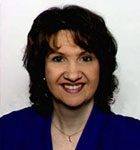Q: What is Christ-Centered Homeschooling?
A:Children are a gift from the Lord. God creates children and then places them in the care of loving parents. A practical arrangement that sometimes seems more like a lease agreement. God provides each parent with the strength and wisdom for raising the children. Expecting them to return to Him when they are grown. The term “old” in the above scripture sometimes translates to “hair on the chin.” Are you snickering at the thought of your daughter in a beard? Know that the meaning behind the biblical idiom is… that no matter how young your children are at this moment, your time with them will go by quickly.
For Christ-centered homeschools, with the primary focus of raising a child in the “nurture and admonishing” (warnings to be careful), there is no place like home. Each child is a unique creation with infinite possibilities and has the ability to dream great dreams to think great thoughts. Society is not always patient with the little ones, and would often prefer that they sit quietly and not question too much. Still a child’s “Why” or “What if” spur them on to learn, practice, and innovate.
Christ-Centered Homeschooling is a protected educational environment that allows a child to grow to be all that God has called them to be.
Q: How is Bible best taught in a home school setting?
A: A daily devotional can be the key to starting the day in a Christ-centered homeschool for both students and educators. Some families utilize a separate Bible curriculum while others incorporate scripture in with their academics. Integrating Bible lessons illuminates your child’s choices in everyday life and therefore can be of great value. Throughout the bible, proud kings suffer loss and humble men experience exalt. Simple knowledge of the scriptures does not change a child’s character but daily discussions that relate biblical teachings into everyday life along with a prayerful desire for a heart change avails much.
Q: What about other academic subjects, do they have to all be Christ-Centered?
A: For Christians, the Bible is not only a book of faith it is a book of Truth. Using science and history to validate the scripture can plant your child’s faith on a firm foundation.
Example: In biblical times, people knew that the earth was round because Isaiah described the circle of the earth. Later in history, Columbus searched for the “path winds” because the scriptures told him they were there. Next explore the reasons that the path wind or currents exist. This is due to the fact that warm air rises and cold air descends filling in the empty spaces creating wind. The same phenomenon occurs when warm and cold water meet. There are plenty of opportunities for labs and science here.
Although integrating math with other subjects isn’t typical you can add it in. However, the fact that Columbus believed the earth to be 25% smaller than it actually is does give opportunity for math exercises as well.
Q: Can I use other approaches to homeschooling, such as learning-styles, delayed academics, un-schooling, etc and still consider my homeschooling Christ-Centered?
A: Yes, you can integrate many developmental approaches into a Christ-Centered homeschool program. Many home educators use textbooks especially in their first year or two. This is probably due to the type of teaching of their generation.
However, “delayed academics,” which does not require book work, allows children to learn at their own pace in a natural environment in the early grades. “Un-schooling” allows a child to follow their own interests and learn real consequences from real life experiences. And, knowing about learning-styles allows families to focus on each unique individual’s learning strengths and learn what challenges them.
Q: What does the Bible say concerning parents educating their own children?
A: The Bible teaches that God is faithful to bring us the knowledge that we need to educate our children. “The anointing which ye have received of him abideth in you, and ye need not that any man teach you: but as the same anointing teaches you of all things, and is truth, and is no lie, and even as it hath taught you, ye shall abide in him.” (1 John 2:27)
Q: Can I Teach My Family Together Yet Treat Each Child as an Individual?
A: Early in my homeschooling, I was expecting to teach every child like an only child based on advice from others. Great advice and it worked well while I had one child. He was a hands-on learner (kinesthetic) and he wanted to do everything the fun way. So I developed a curriculum full of creative projects and games. My second child entered our school with a whole different outlook. He was an audio learner (preferred to learn with words). He wanted information and needed to do things “per instruction.” It was soon evident that I needing to add fact-based materials to our programming.
The following year my daughter joined our classes. She is a visual learner. Her love for imagery and great literature was a welcome addition to our families learning experience. School went well but I didn’t see the retention that I had hoped. That was until the final step, “teaching back.” It is through teaching that we receive the full benefit of our education and each of my children loved being the teacher.
Reference: “Different Children, Different Needs; the Art of Adjustable Parenting” by Dr. Charles G. Boehi and Dr. Robert Rohm
Q: What is Four Step Education?
A: “Four Step Education” is a method that teaches to all the learning styles and on a multi-level basis. The four steps are: get their INTEREST, INFORM them, INTEGRATE the subjects and then allow your student to INNOVATE and include their own creativity by “teaching back” all they have learned.
Augustine originally presented this method in the 4th century. Step one (interest) incorporated the “Grammar Stage” (rote memory work), with “Wonder Theology” giving students an awe of nature and its creator. Step two is (inform), or the “Dialectic State” logic stage. This presents students with facts and encourages them to expand their critical thinking skills. Step three (integrate) is “hands-on” and allows students to practice what they have learned. Augustine put strong emphasis on the arts. They were encouraging students to create and appreciate art as a platform in a child’s education, especially the development of writing skills.
Using the arts to entice students to read and write is “Art to Literacy” or “Picturesque Writing.” The fourth step (innovate), or “Rhetoric Stage.” is a very necessary but often neglected step. At this stage students “teach back” what they have learned through: drama, narration, teaching younger students, sharing, presentations, and demonstrations.
Reference: http://www.lifeinamerica.com/
Q: What is the Principle Approach?
A: This very recent Christ-centered approach to homeschooling using the 4 R’s. Research – using the Bible as the source; Reasoning – making conclusions from scriptural references; Relating – biblical principles to one’s character; and, Recording – the individual applications and use of biblical principles. All subjects contain an emphasis on personal responsibility in all spheres of life based on biblical principles.
Reference: A Guide to American Christian Education for the Home and School: The Principle Approach by James B. Rose (Available at your local Library)
Q: What is the Classical Approach?
A: Many Christ-Centered homeschools use the Classical Approach, which has a basis on an Old English form of education teaching children in three stages called the Trivium.
In the first or “Grammar Stage” children ages 6-10 learn subject fundamentals. The core subjects are reading, writing, spelling, math, and Latin. Children are also do exercises in observation, listening and memorization.
The “Dialectic Stage”, ages 10-12 focuses on developing independent and abstract thought. Latin continues in addition to other foreign languages. Children question and debate using logical methods and fact to support their conclusions. This stage also includes essays, historical interpretations and higher math.
The final, or “Rhetoric Stage,” is 14 and up. This stage seeks to produce a student who can use written and spoken language in eloquent and persuasive ways.
Reference: “The Lost Tools of Learning” a paper written by Dorothy Sayers
 With an extensive background in teaching, Ellen speaks with understanding to parents and educators. Her background includes; developing curriculum, researching learning styles, administering Life In America Schools and 13 years as a home educator. She has a certification as a learning styles consultant and is best known as the author of five Christ-Centered, K-12 textbooks known as the Life In America series.
With an extensive background in teaching, Ellen speaks with understanding to parents and educators. Her background includes; developing curriculum, researching learning styles, administering Life In America Schools and 13 years as a home educator. She has a certification as a learning styles consultant and is best known as the author of five Christ-Centered, K-12 textbooks known as the Life In America series.




